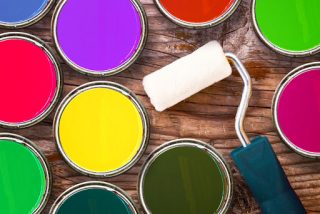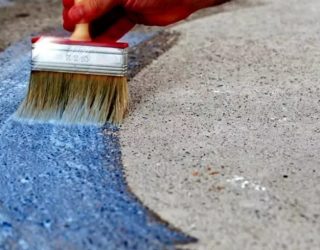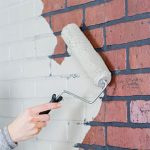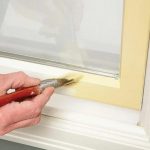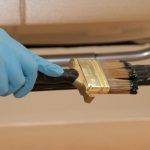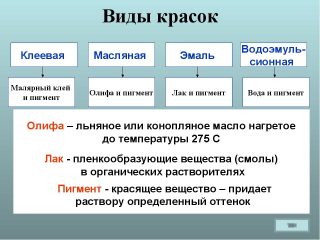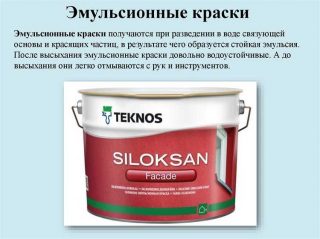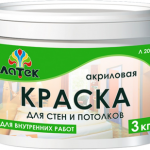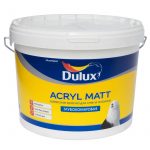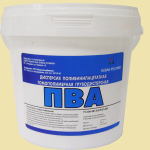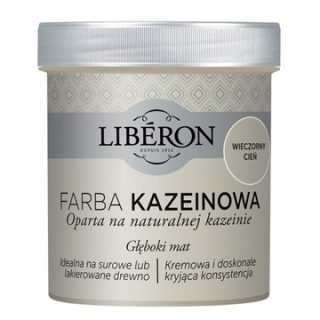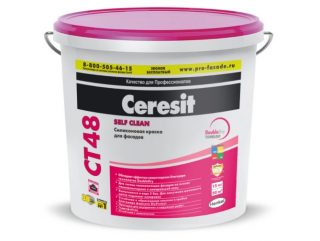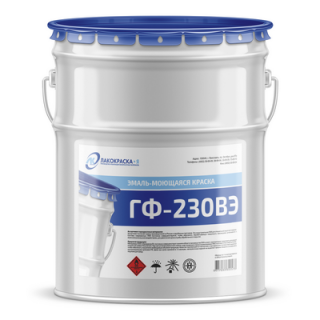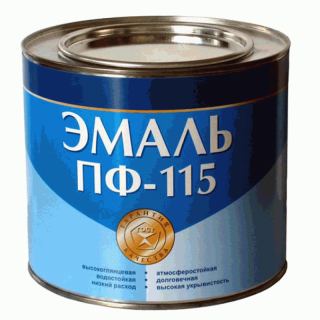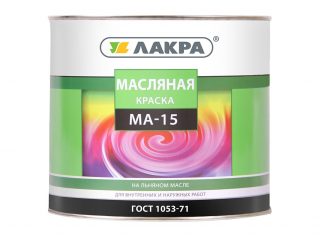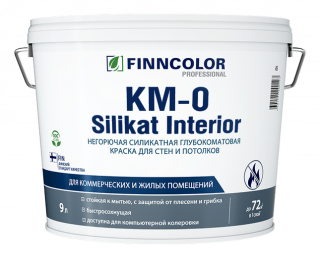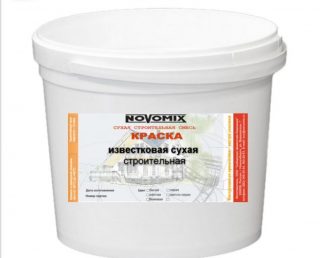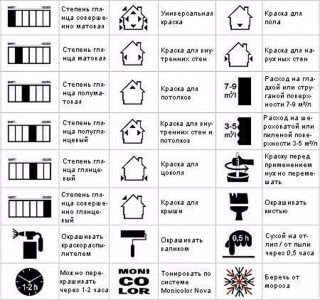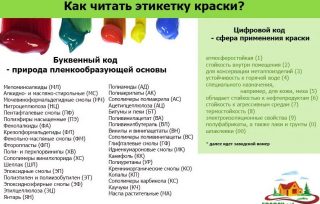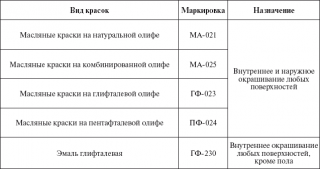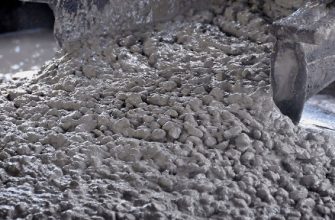Paints and varnishes are used as the finishing exterior and interior decoration of buildings. They give the surface an aesthetic appearance, serve as protection against corrosion, moisture and ultraviolet radiation.
- Application of paints in construction and repair
- Classification of coloring compositions
- Water based paints
- Emulsion
- Acrylic
- Latex
- PVA
- Adhesives
- Casein
- Dextrinated
- Silicone
- Paint and varnish on organic solvent
- Alkyd
- Oil
- Enamel
- Mineral paints
- Silicate paints
- Lime compositions
- Criterias of choice
- For interior work
- For external work
- What to look for when examining a label
Application of paints in construction and repair
Paints and varnishes (LKM) contain from 8 to 16 components... Basic:
- Pigments - the uniformity and intensity of surface overlap, resistance to atmospheric factors and temperature depend on their type.
- Excipients - regulate the texture of paints, provide good adhesion.
- Binders - components that form a film on the surface, retain fillers and pigments.
- Solvents (alcohols, water, oils and others) - reduce the viscosity of the product.
To impart special properties, various supplements: fungicides, fire-resistant defoamer, frost resistance enhancer.
Coloring compositions protect metal products from corrosion, and wood from drying out, cracking, and decay. When performing repair work, they are used for finishing the facade, interior walls, window and door structures, floors, furniture, interior items and landscape design.
The paints are applied on a flat, prepared surface. To improve adhesion and reduce paint consumption, it is recommended to use a primer.
- concrete - the product should prevent dust formation, give an aesthetic appearance, water and organic soluble paints and varnishes (emulsions, polyurethane and alkyd compounds) are recommended;
- metal - the main task is protection from moisture, oil, alkyd and acrylic products are suitable;
- wood - the paint should contain fungicides, fire retardants, experts advise oil and alkyd options;
- plaster - apply any types of paintwork materials (acrylic, latex), intended for the mineral base;
- plastic - the product should not contain solvents that damage the material, for example, an aqueous polyurethane compound;
- brick - recommended acrylic, PVA, these products are characterized by good hiding power, steam, are not afraid of ultraviolet radiation.
To choose the right product for decoration, you need to understand the variety of options offered, study their properties, strengths and weaknesses.
Classification of coloring compositions
- Appointment - universal, for indoor or outdoor use.
- Solvent type - water-soluble (water emulsion) and with an organic solvent (white spirit, kerosene).
- Gloss degree - matte, semi-matt, semi-gloss and glossy.
- Operating conditions - weatherproof, waterproof, special, electrical insulating and others.
- Surface type - wood, metal, concrete, rust, brick, plaster.
The most significant component that determines the physicochemical properties of the paint is the binder. The film former is based on natural or synthetic drying oil, minerals, resins, polymers.
Water based paints
Emulsion
An emulsion is a composition obtained from small insoluble particles of polymers and pigments, suspended in water. LKM fits well on any surface, except for those previously painted with glossy paints or varnishes. It is economical, dries quickly and is odorless. Emulsions are resistant to moisture and alkalis, do not flake off. Their properties depend on the type of binder.
Acrylic
The universal product is recommended for indoor and outdoor painting. The binder of the paint is acrylic polymer. An elastic, frost-resistant, vapor-permeable film is formed on the surface to be trimmed, resistant to fading. Acrylic compositions differ from oil materials in drying speed, it varies from 20 minutes to several hours. The formed film can be washed. The coating lasts more than 10 years.
Acrylics are sold in cans and cans. The technology of applying paintwork materials allows you to efficiently process hard-to-reach areas, do without the use of painting tools (brushes and rollers).
Latex
Coloring products rubber based (latex) form a strong and moisture-resistant film on the surface. The coating is durable and environmentally friendly. The composition is easy to apply with a brush, roller or spray.
Latex material is recommended for rooms with increased requirements for durability, reliability and durability of the finish. The only drawback is the average UV resistance.
PVA
Polyvinyl acetate paints are dispersions with low water resistance, designed for dry rooms. They dry quickly and give a rich color. The product is offered ready-made, does not require dilution. A significant plus is the low price.
Adhesives
Paint compositions based on adhesive mixtures also belong to the group of water-soluble ones. Recommended for dry rooms only... They are not resistant to moisture, abrasion, and the appearance of microorganisms. They are used for painting plaster, concrete, brick, drywall. As part of paintwork materials chalk, starch, glue (casein, glutin, albumin), pigments and fillers. Water is used to dilute the dry product.
Casein
Dextrinated
Products based on dextrin isolated from starch, manufactured with the addition of bone glue... After drying, the porous coating is good for air and moisture. A solution of dry powder is prepared 1: 1. To enhance water resistance, linseed oil is introduced (60-70 ml per 1 liter).
The disadvantages of all adhesives include heterogeneity, application complexity, and low decorative characteristics.
Silicone
The product is versatile, suitable for any surface, can be applied to the facade. Due to its viscous structure, no special preparation of the base is required, the silicone material is able to mask small cracks. Among the disadvantages are the high cost of paintwork materials, as well as possible corrosion of the metal due to the gas permeability of the coating.
Paint and varnish on organic solvent
High quality coating and affordable cost allow organic solvent materials to compete with more environmentally friendly and safe water-dispersible paints. Leading manufacturers are reducing their number in the assortment, but not completely abandoning them. Compositions based on oil and various resins processing can be applied at low temperatures, fresh coating is not afraid of moisture.
Alkyd
Paints and varnishes based on alkyd resins belong to enamels... They are of two types: pentaphthalic and glyphthalic... For painting in everyday life, the first option is often used. Alkyd enamels are characterized by high covering power, resistance to mechanical damage, frost and moisture. The composition is easy to apply, has a pronounced gloss, is compatible with wood and metal. The downside of the material is the release of toxic substances during the drying process and poor vapor permeability.
Oil
Despite the toxicity, oil-based formulations are used in construction and repair. Their demand is associated with positive characteristics: high moisture resistance, coating strength, affordable cost.
Enamel
If it is necessary to quickly dry the finish, preference is given to nitro enamel.
Mineral paints
Facade finishing is carried out with special compounds developed for the mineral surface. Such paints are diluted with water, have good vapor permeability, and are environmentally friendly. To increase frost resistance, synthetic resins are added to them.
Silicate paints
The composition of paintwork materials has one component - liquid glass with the addition of ethyl silicate, making it an excellent option for painting textured and smooth facades, interiors. The composition is characterized by strength, biological stability, non-flammability. Silicate paint is recommended for concrete, plaster, brick, clay, but it is incompatible with wood and plastic.
Lime compositions
The binder of the product is slaked lime. Inorganic pigments are used, additives are aluminum alum, calcium chloride, salt... The paint is resistant to moisture, temperature changes, its main advantage is its low cost.
Criterias of choice
For interior work
The main requirements for paints and varnishes for interior decoration - environmental friendliness... The composition should not emit toxic substances and a pungent odor. Also important resistance to abrasion, sunlight, drying time and service life... For rooms with high humidity, waterproof paints (silicate, latex) are selected. Based on the selection criteria, experts advise purchasing water-dispersed compositions.
For external work
It is necessary to consider the type of base. For wood a moisture-proof material is needed that protects against insects, rot and cracking. On concrete and brick a vapor-permeable coating is recommended.

What to look for when examining a label
- type of binder (film-forming element);
- group for the primary purpose;
- factory serial number.
Film-forming base- these are the first two capital letters of the code (for example):
- AK - polyacrylate;
- AC - alkyd-acrylic;
- BT - bituminous;
- ZhS - silicate;
- MA - oil;
- PA - polyamide.
Groups by appointment (operating conditions) are marked with serial numbers from 1 to 9:
- weatherproof (outdoor work) - 1;
- limited weather resistance (internal work) - 2;
- conservation - 3;
- waterproof - 4;
- special - 5;
- oil and petrol resistant - 6;
- chemically resistant - 7;
- heat-resistant - 8;
- electrical insulating - 9.
The code is preceded by (not always) an index indicating type of paint:
- B - without solvent;
- B - water-borne;
- VD - water dispersion;
- OD - organodispersed;
- P - powder.
- natural -1;
- oxol - 2;
- glyphthalic - 3;
- pentaphthalic - 4;
- composite - 5.
Must be indicated paint type - acrylic, oil, alkyd, rubber and others. It is worth paying attention to product features - Recommended drying conditions (hot or cold), gloss level, flammability, viscosity.

